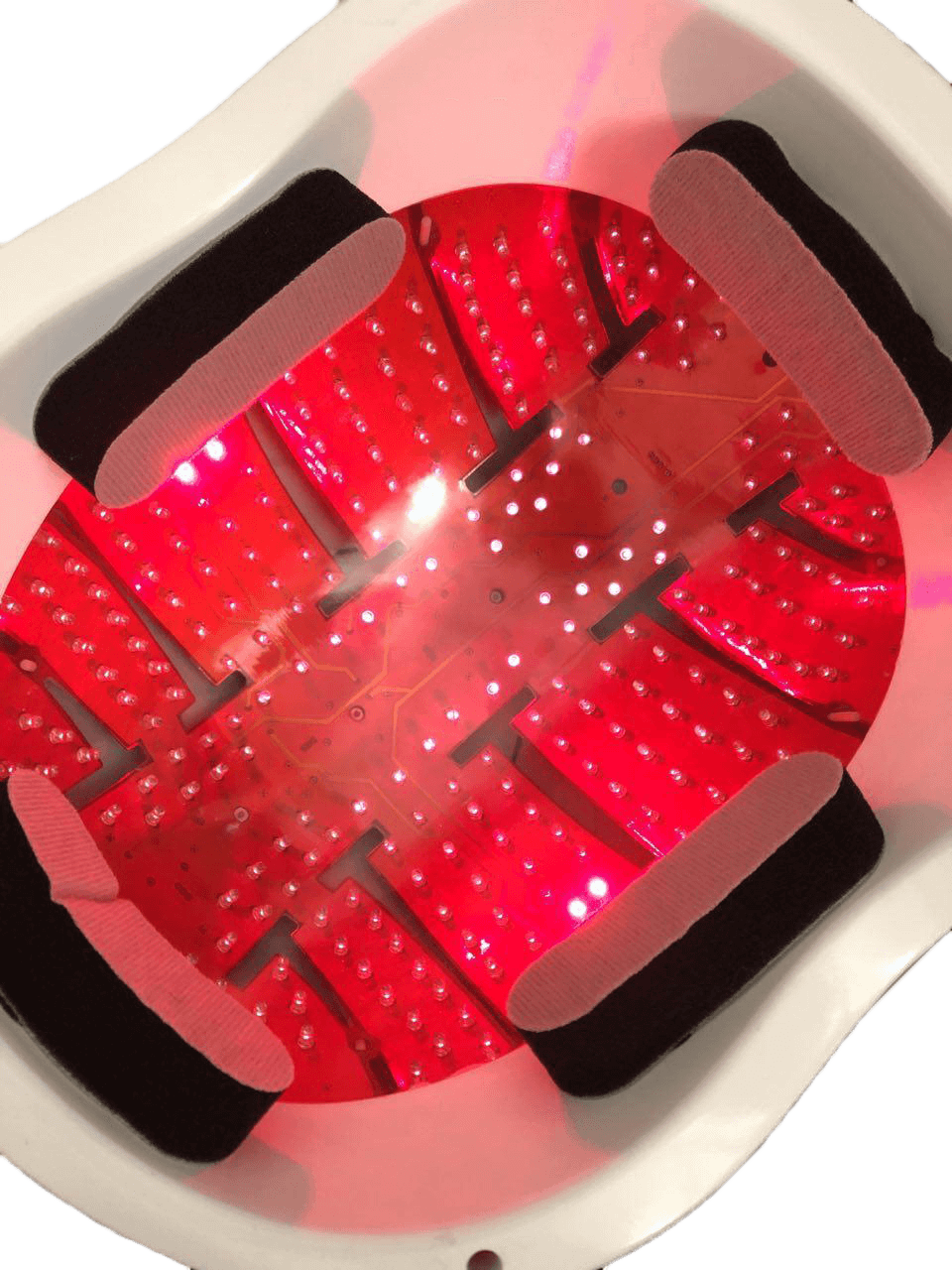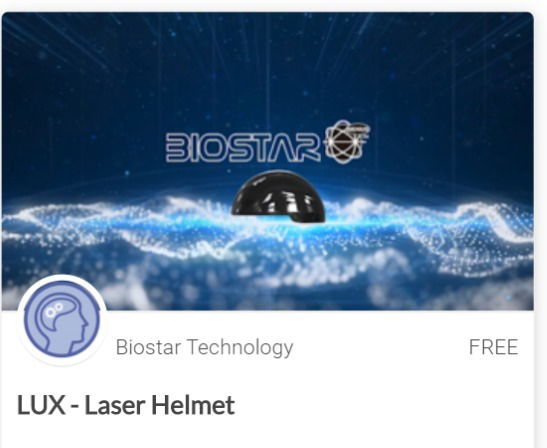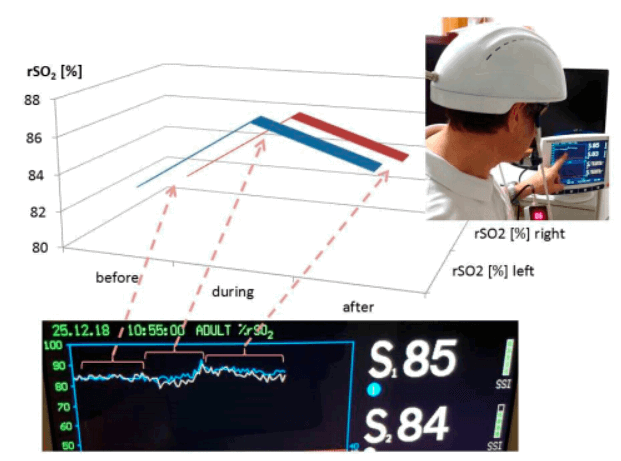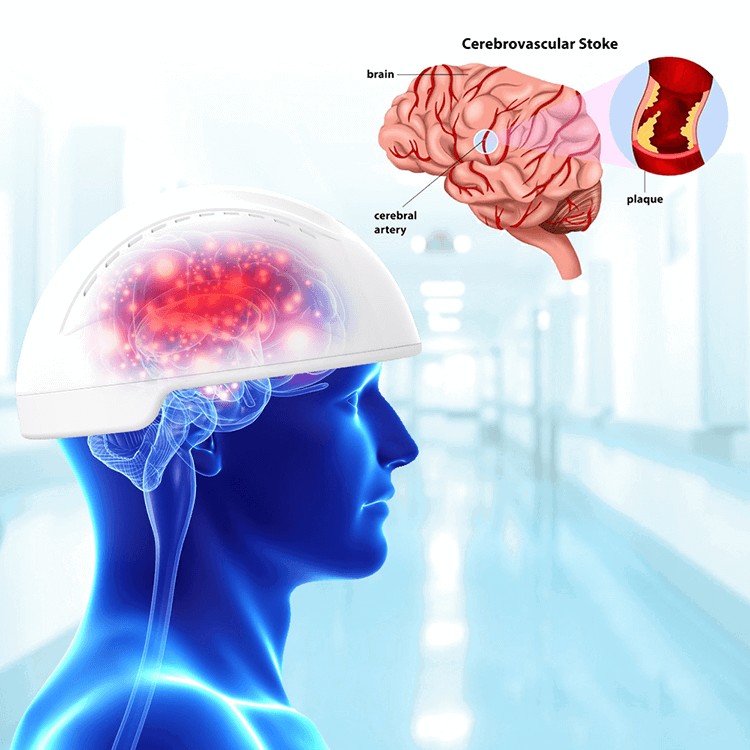Photon Bio-Modulation (PBM) Laser Helmet

Compared with other light therapy methods, our LUX laser helmet light therapy is the most safe and no side effects way for therapy.Light therapy was known in medical field for a long time, especially for the red light and infrared.All our clients feel good spirit and comfortable after using.
Our device works with 810nm infrared, it can extend through the skull into the brain, offers an unique array of neurological benefits. It usually be used for light therapy in deep tissues as well as in bones. And also be used for cell imaging, as well as circulating cell harmonization.
1.The 810 nm wavelength has the ability to extend through the skull to the brain, promoting recovery from traumatic brain injury and reducing long-term nerve damage.
2. 810nm wavelength can help clients with severe depression and anxiety by boosting circulation in the brain.
3. Near-InfraRed (NIR) light is absorbed by cytochrome C oxidase in mitochondria.
4. Light therapy helps to increased blood flow, energy, neuroprotection and less inflammation.
5. Rehabilitation assistance for traumatic (stroke, TBI), neurodegenerative and psychiatric issues.
Introduction
Biostar-LUX helmet is a Photon Bio-Modulation (PBM) unit for the brain, which also describes the use of red or near-infrared light or (NIR) to stimulate, healing response, regenerate energy, and protect tissue that has either been injured or degenerating.
One of the organ systems of the human body that is most necessary to life, and whose optimum functioning is most worried about by humankind in general, is the brain.
The brain suffers from many different types of disorders that can be classified into three broad groupings: traumatic events (stroke, traumatic brain injury, and global ischemia), degenerative diseases (dementia, Alzheimer’s and Parkinson’s), and psychiatric disorders (depression, anxiety, post traumatic stress disorder). There is some evidence that all these seemingly diverse conditions can be beneficially affected by applying light to the head. There is even the possibility that (PBM) could be used for cognitive enhancement in normal healthy people.
In this transcranial PBM (tPBM) application, near-infrared (NIR) light is often applied to the forehead because of the better penetration (no hair, longer wavelength).
Photon Bio-Modulation (PBM) therapy was developed more than 50 years ago; however, there is still no common agreement on the parameters and protocols for its clinical application. Some research teams have recommended the use of a power density of less than 100 mW/cm2 and an energy density of 4 to 10 J/cm2 [11]. Others groups recommend as much as 50 J/cm2 at the tissue surface [11]. Parameters like wavelength, energy, fluency, power, irradiance, pulse mode,therapy duration, and repetition rate can be applied in a wide range. Our present preliminary results showed a clear response of cerebral rSO2 in relation to the LED stimulation. However, it has to be mentioned that the temperature increased significantly, and these effects have to be taken into account in further studies in detail. There is also the fact that ineffective studies in cells with high mitochondrial activity appear to be due more often to over-dosing than to under-dosing [11]. Therefore, clinical studies concerning the optimal stimulation doses are necessary.
Specifications
Name | Brain Photobiomodulation Machine |
Model | GY-PDT1 |
LED Wavelength | 810 nm |
Led Quantity | 256pcs |
Power(total helmet) | 15 W |
Power(one LED) | 60 mW |
Power | 24 mW/cm2 |
Certificate | CE, FDA |
OEM | Support |
Color | White/Black |
Option Time | 6-12-18-24-30 minutes |
WATCH A FREE CLASS
What is Photobiomodulation?
Photon Bio-Modulation (PBM) describes the use of red or near-infrared light to stimulate, heal, regenerate, and protect tissue that has either been injured, is degenerating, or else is at risk of dying. One of the organ systems of the human body that is most necessary to life, and whose optimum functioning is most worried about by humankind in general, is the brain. The brain suffers from many different disorders that can be classified into three broad groupings: traumatic events (stroke, traumatic brain injury, and global ischemia), degenerative diseases (dementia, Alzheimer’s and Parkinson’s), and psychiatric disorders (depression, anxiety, post traumatic stress disorder). There is some evidence that all these seemingly diverse conditions can be beneficially affected by applying light to the head. There is even the possibility that PBM could be used for cognitive enhancement in normal healthy people. In this transcranial PBM (tPBM) application, near-infrared (NIR) light is often applied to the forehead because of the better penetration (no hair, longer wavelength).
Abstract:
A new piece of equipment for LED (light emitting diode) brain photobiomodulation is introduced. Preliminary results from regional cerebral oxygen saturation and from thermography are shown before, during and after stimulation.
The procedure offers a new way to quantify the biological effects of a possible innovative therapeutic method. However further measurements are absolutely necessary.
The Photon Bio-Modulation (PBM) is a therapeutic instrument based on the principle of photobiomodulation. It has a good therapeutic effect on traumatic events (stroke, traumatic brain injury, and global ischemia), degenerative diseases (dementia, Alzheimer’s and Parkinson’s), and psychiatric disorders (depression, anxiety, post traumatic stress disorder)
Brain photobiomodulation (PBM) with red to near-infrared (NIR) light emitting diodes (LED) could be an innovative therapy for a variety of neurological and psychological disorders. Red/NIR light can stimulate mitochondrial respiratory chain complex IV (cytochrome c oxidase) and increase ATP (adenosintriphosphat) synthesis. In addition, light absorption by ion channels leads to the release of Ca2+ and to the activation of transcription factors and gene expression. BrainPhoton Bio-Modulation (PBM) therapy could improve the metabolic capacity of neurons and is able to stimulate anti-inflammatory, anti-apoptotic and antioxidant responses as well as neurogenesis and synaptogenesis. Findings suggest that PBM may enhance, for example, the frontal brain functions of older adults in a safe and cost-effective manner.
Note the increase in the regional cerebral oxygen saturation during and after stimulation on the left and right side.
Results from thermal imaging of the first pilot measurement using the new stimulation helmet. Note the increase in temperature on the helmet (upper row; a before, b during, and c after stimulation) on the forehead (middle row; d–f) and on the chin (lower row; g–i).
Main Function
1.The 810 nm wavelength has the ability to extend through the skull to the brain, promoting recovery from traumatic brain injury and reducing long-term nerve damage.
2. 810nm wavelength can help clients with severe depression and anxiety by boosting circulation in the brain.
3. Near-InfraRed (NIR) light is absorbed by cytochrome C oxidase in mitochondria.
4. Light therapy helps to increased blood flow, energy, neuroprotection and less inflammation.
5. Rehabilitation assistance for traumatic (stroke, TBI), neurodegenerative and psychiatric issues.
Indications
- Traumatic events (like stroke, traumatic brain injury, and global ischemia).
- Degenerative issues of the brain (like dementia, Alzheimer’s and Parkinson’s).
- Psychiatric disorders (like depression, anxiety, post traumatic stress disorder).
Contraindication
- Avoid direct exposure to the eyes, pregnant woman’s, skin melanoma, brown spots.
- Cancer patients with early and middle stage malignant tumors.
- Contraindications to patients with acute bleeding disorders.
Photon Bio-Modulation (PBM) therapy was developed more than 50 years ago; however, there is still no common agreement on the parameters and protocols for its clinical application. Some research teams have recommended the use of a power density of less than 100 mW/cm2 and an energy density of 4 to 10 J/cm2. Others groups recommend as much as 50 J/cm2 at the tissue surface. Parameters like wavelength, energy, power, irradiance, pulse mode, therapy duration, and repetition rate can be applied in a wide range. Our present preliminary results showed a clear response of cerebral rSO2 in relation to the LED stimulation. However, it has to be mentioned that the temperature increased significantly, and these effects have to be taken into account in further studies in detail. There is also the fact that ineffective studies in cells with high mitochondrial activity appear to be due more often to over-dosing than to under-dosing. Therefore, clinical studies concerning the optimal stimulation doses are necessary.
Transcranial PBM appears promising therapy different mental diseases. Pitzschke et al. also measured light propagation in different areas of Parkinson’s disease (PD)-relevant deep brain tissue during transcranial and transsphenoidal illumination (at 671 and 808 nm) of a cadaver head and modeled optical parameters of human brain tissue using Monte-Carlo simulations. This study demonstrates that it is possible to also illuminate deep brain tissues transcranial and transsphenoidal. This opens therapeutic options for sufferers of PD or other cerebral diseases necessitating light therapy. There have been several investigations concerning possible adverse effects for LED PBM.
For example, Moro et al. explored the effects of longer term application, up to 12 weeks, of PBM (670 nm) in normal, naïve macaque monkeys. They found no histological basis for any major biosafety concerns associated with PBM delivered by an intracranial approach. Hennessy and Hamblin also pointed out the already established safety and notable lack of adverse effects of transcranial PBM. The preliminary results are very promising; however, further research work is required in order to be able to use, for example, this new kind of PBM as a therapeutic method. Many investigators believe that PBM with LED and/or laser for brain disorders will become one of the most important medical applications of light therapy in the coming years and decades.
Reference: Brain Photobiomodulation – Preliminary Results from Regional Cerebral Oximetry and Thermal Imaging



